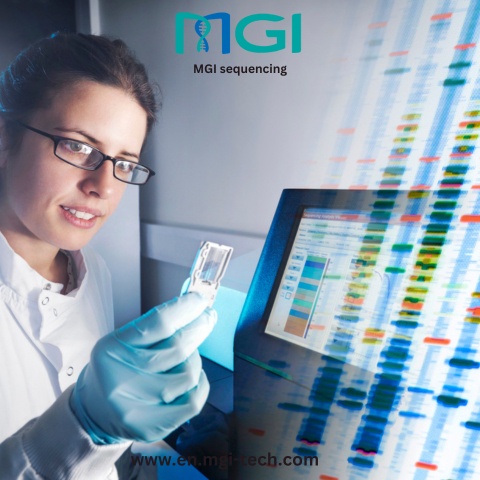MGI sequencing, also known as next-generation sequencing (NGS), is a revolutionary technology that allows researchers to decode the genetic information of organisms with unprecedented speed and accuracy. This guide aims to provide a detailed overview of MGI sequencing, from its principles to its applications in various fields.
Principles of MGI Sequencing: MGI sequencing operates on the principle of massively parallel sequencing, wherein millions of DNA fragments are simultaneously sequenced in a single reaction. The process involves several key steps:
-
Library Preparation: DNA samples are fragmented and tagged with unique identifiers known as barcodes. These barcodes allow for the identification and tracking of individual DNA fragments throughout the sequencing process.
-
Sequencing: The prepared DNA libraries are loaded onto a sequencing platform, where they undergo cycles of synthesis to determine the nucleotide sequence of each fragment. MGI sequencing platforms utilize innovative sequencing chemistry and advanced optics to achieve high-throughput sequencing.
-
Data Analysis: The raw sequencing data is processed using bioinformatics tools to align the sequences, identify variations, and reconstruct the original genome or transcriptome.
Applications of MGI Sequencing: MGI sequencing has diverse applications across various fields, including:
-
Genomics: MGI sequencing enables comprehensive genome sequencing, facilitating the identification of genetic variations associated with diseases, traits, and evolutionary processes.
-
Transcriptomics: By sequencing RNA molecules, MGI sequencing allows researchers to analyze gene expression patterns, splicing variants, and regulatory mechanisms in different tissues and conditions.
-
Epigenomics: MGI sequencing can be used to investigate epigenetic modifications, such as DNA methylation and histone modifications, providing insights into gene regulation and chromatin structure.
-
Metagenomics: MGI sequencing enables the study of microbial communities in diverse environments, including the human gut, soil, and oceans, elucidating their composition, function, and ecological interactions.
-
Clinical Diagnostics: MGI sequencing has revolutionized clinical genetics by enabling rapid and accurate diagnosis of genetic disorders, personalized treatment strategies, and pharmacogenomic profiling.
Challenges and Future Perspectives: Despite its numerous advantages, MGI sequencing also presents challenges, such as data analysis complexity, cost, and ethical considerations surrounding privacy and consent. However, ongoing advancements in sequencing technology, bioinformatics, and data sharing initiatives promise to address these challenges and further enhance the capabilities of MGI sequencing in the future.
Conclusion: MGI sequencing represents a transformative tool for unraveling genetic mysteries across diverse fields, from basic research to clinical applications. By understanding the principles, applications, and challenges of MGI sequencing, researchers can harness its full potential to advance our understanding of the genetic basis of life and disease.


No comments yet